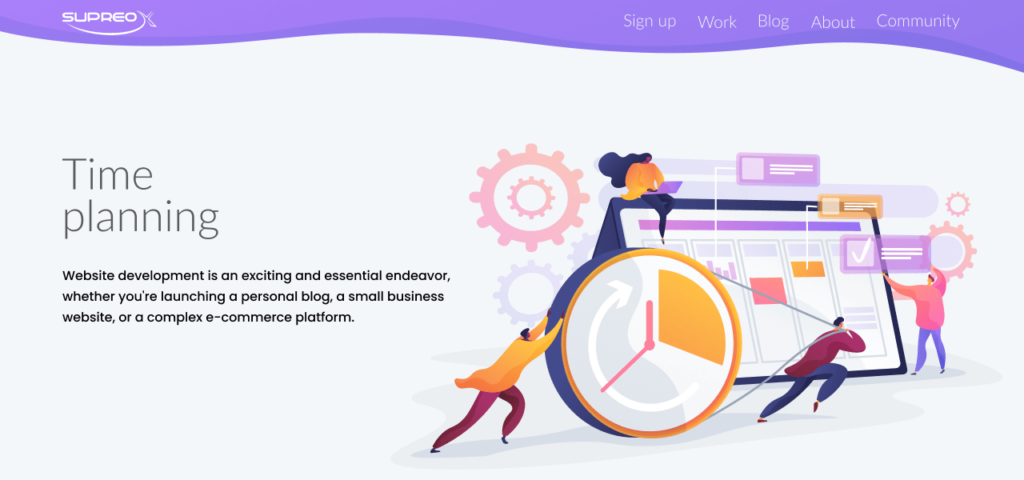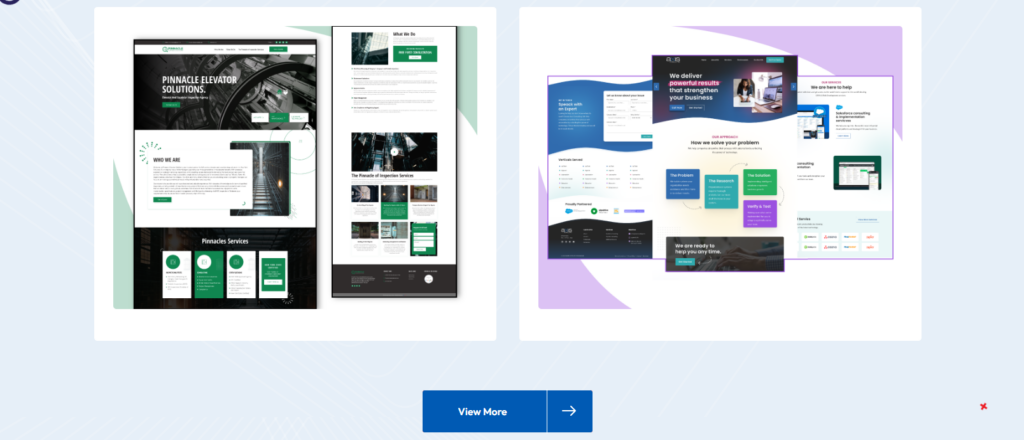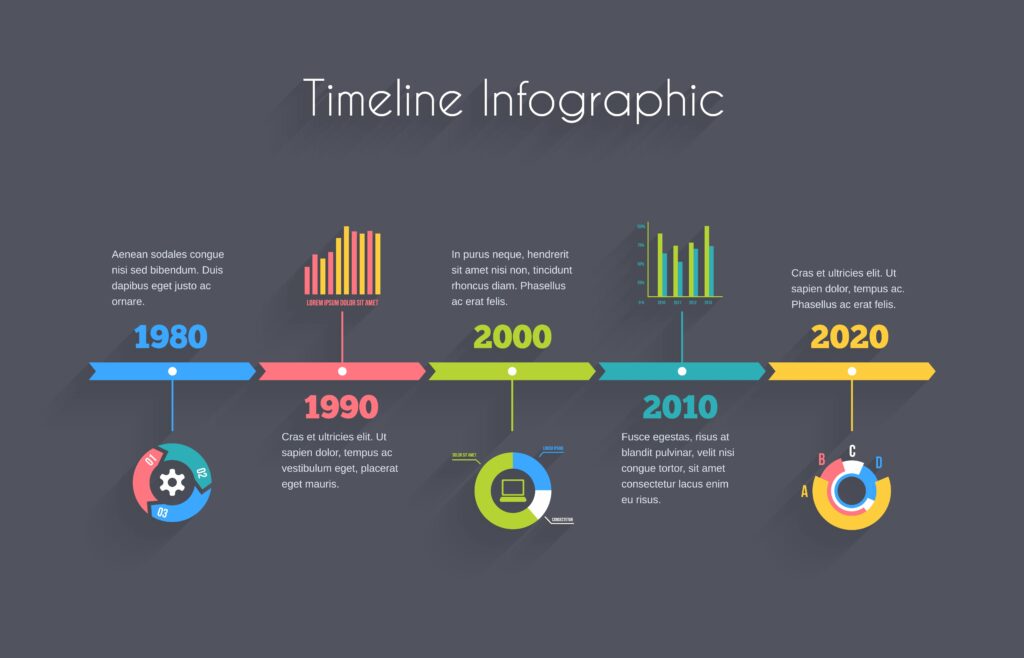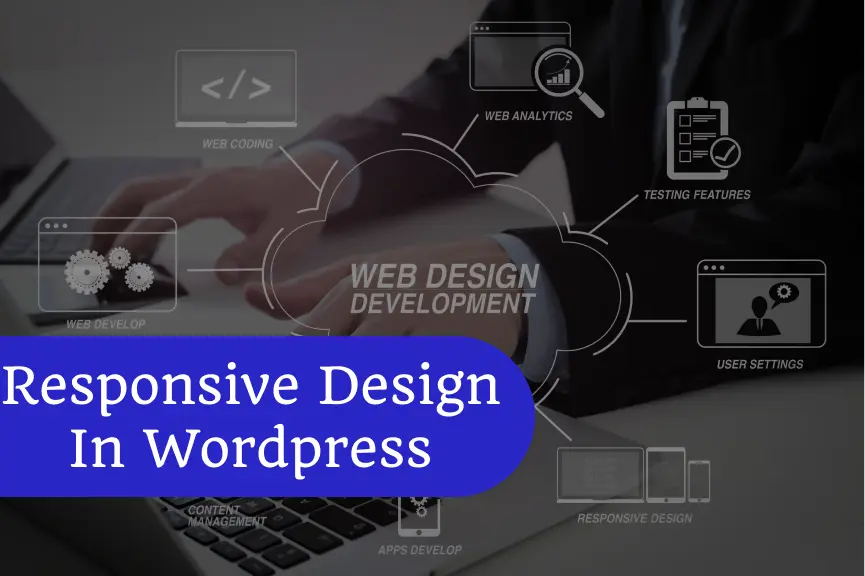Website development is an exciting and essential endeavor, whether you’re launching a personal blog, a small business website, or a complex e-commerce platform. However, one of the most common questions that often arises is, “How long does it take to build a website?” The answer isn’t one-size-fits-all; it depends on various factors. In this comprehensive guide, we’ll delve into the intricacies of website development timelines, shedding light on the factors that affect them, the stages of development, and practical tips to expedite the process.
Factors Affecting Website Development Time

Website development timelines can vary significantly from one project to another. Several factors come into play:
Type of Website
The type of website you intend to build is a critical determinant of the time required. A simple personal blog may take significantly less time compared to a full-fledged e-commerce platform. Different types of websites have varying complexities and features, influencing the timeline accordingly.
Features and Functionality
The complexity of features and functionality is another key factor. Websites with advanced features like e-commerce functionality, user registration, or custom applications will naturally take longer to develop. More features mean more coding and testing.
Design and Customization
Customized designs, while visually appealing, can extend the development timeline. Designing unique templates, graphics, and layouts requires time and effort. Choosing pre-designed templates or themes can expedite the process.
Content Creation
Content is the backbone of any website. The time spent on content creation, including text, images, videos, and other multimedia elements, can significantly impact the overall timeline. Quality content is essential for a successful website.
Budget and Resources
Your available resources, both in terms of budget and personnel, play a crucial role. If you have a larger budget and a team of experienced developers, the project may progress more quickly. Limited resources may lead to delays.
When planning your website development, consider these factors carefully. Customization, features, and the type of website you aim to create will all influence the time needed for a successful launch.
Stages of Website Development

Website development comprises several stages, each with its own timeline considerations:
Planning and Research
Before any actual development begins, thorough planning and research are crucial. During this stage, you define your website’s purpose, target audience, and objectives. You also decide on the technologies and platforms to use. Effective planning can save time during the subsequent stages.
Design and Wireframing
Design and wireframing involve creating the visual structure of your website. This stage includes designing layouts, templates, and user interfaces. The time needed here depends on the complexity of the design and the number of revisions required.
Development and Coding
The heart of website development is the actual coding process. Developers transform design mock-ups and wireframes into functional web pages. The complexity of your website and the number of features you’re implementing directly impact the development timeline.
Testing and Quality Assurance
Once the development is complete, thorough testing and quality assurance are necessary to identify and rectify issues. This stage ensures that the website functions flawlessly and is free from bugs. The testing period can vary based on the project’s size and complexity.
Launch and Post-Launch
After successful testing, your website is ready for launch. However, the work doesn’t end here. Post-launch, you’ll need to continuously monitor and maintain the website, making updates, fixing issues, and adding new content.
The duration of each stage varies depending on project-specific factors, but it’s essential to allocate sufficient time for each to ensure a smooth development process.
Average Timelines for Different Website Types

To give you a more concrete idea of website development timelines, let’s look at estimated time frames for various types of websites:
| Type of Website | Estimated Development Time |
| Personal Blog | 1 to 2 weeks |
| Small Business Site | 2 to 3 weeks |
| E-commerce Platform | 3 to 5 weeks |
These are general estimates and can vary depending on factors like customization, features, and content volume. To get a more accurate timeframe, consult with your development team.
In the next section, we’ll explore some tips for expediting the website development process and ensuring it stays on track.
Tips for Faster Website Development
Here are some practical tips to help you streamline the website development process:
Effective Project Management: Implement robust project management techniques to keep your team organized and on track. Use project management tools to schedule tasks and milestones.
Collaboration with Developers and Designers: Promote effective communication and collaboration between your design and development teams. When both sides work in sync, development progresses smoothly.
Website Builders and Templates: Consider using website builders or pre-designed templates if your project allows. These can significantly reduce development time while maintaining quality.
Efficient Content Creation and Gathering: Plan your content creation in advance. Ensure you have all the necessary text, images, and media ready to go. Content delays can cause significant setbacks.
Regular Testing and Revisions: Don’t skip the testing phase. Regular testing and revisions help catch issues early, preventing delays and costly fixes down the line.
By following these tips, you can expedite your website development while maintaining high-quality results.
In the following sections, we’ll explore real-life case studies and compare hiring professionals to DIY website development to provide a well-rounded perspective on the topic.
Real-Life Case Studies
Let’s delve into some real-life case studies to get a better understanding of how different factors influence website development timelines:
Personal Blog
Sarah, a blogger, wanted to launch her personal blog. She opted for a standard template and had her content ready. The project took approximately four weeks from planning to launch. The simplicity of her blog’s design and the absence of advanced features kept the timeline relatively short.
Small Business Website
John, a small business owner, needed a website for his local restaurant. He required custom features like an online reservation system and a menu showcase. With these added complexities, the project extended to around ten weeks. Design and testing took up a significant portion of the timeline.
E-commerce Platform
Mark’s goal was to set up a comprehensive e-commerce platform for his fashion brand. The project encompassed a custom design, intricate product listings, and secure payment gateways. It took approximately six months (24 weeks) to complete the project, with extensive testing and quality assurance.
These case studies illustrate how the type of website, customization, and features significantly impact development timelines. Realistic expectations and thorough planning are crucial for a successful outcome.
Hiring Professionals vs. DIY Website Development
Whether to hire professionals or undertake DIY website development is a critical decision that affects the timeline and the quality of your project. Let’s weigh the pros and cons of each approach:
Hiring Professionals
Pros:
Expertise: Professional web developers and designers bring experience to the table, ensuring high-quality results.
Efficiency: Professionals work more efficiently and can complete tasks faster due to their expertise.
Less Stress: You can focus on your core business, knowing that experts are handling the technical aspects.
Cons:
Cost: Hiring professionals can be costly, which may impact your budget.
Communication: Effective communication is essential, and misunderstandings can lead to project delays.
DIY Website Development
Pros:
Cost-Effective: DIY development can save you money, especially if you use website builders or templates.
Control: You have full control over the project and can make changes at your own pace.
Cons:
Time-Consuming: DIY development can be time-consuming, especially if you lack technical expertise.
Quality: Quality may be compromised if you lack design and coding skills.
The choice between hiring professionals and DIY development depends on your budget, available resources, and your level of technical expertise. It’s crucial to weigh the pros and cons carefully.
Conclusion
In the world of website development, the question, “How long does it take to build a website?” is both complex and nuanced. The timeline varies depending on factors like the type of website, features, design, content, and budget. However, with meticulous planning, efficient project management, and realistic expectations, you can expedite the development process.
Whether you choose to hire professionals or embark on a DIY journey, remember that the success of your website ultimately depends on the quality of the final product and how well it serves its intended purpose.
If you have any more questions or need guidance on your website development project, don’t hesitate to reach out to professionals or explore further resources on this topic.











